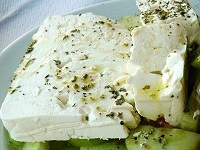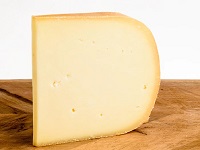Beaujolais Nouveau (France)
Beaujolais Nouveau is a special type of Beaujolais.
It is released for sale on the third Thursday of November in the same year as the harvest.
Beaujolais Flavors
Beaujolais wines are known for their bright and fruity aromas, with dominant notes of red fruits like cherry, raspberry, and cranberry. Some examples may also display floral hints and a touch of spices.
Strawberry |
Raspberry |
Currant |
Cherry |
Cranberry |
Violets |
Spices |
Minerals |
Carbonic Maceration Flavors
Banana |
Mushroom |
Pepper |
Licorice |
Beaujolais Profile
Beaujolais tends to be light bodied with good fruit aromas, and very little tannin:
| SUGAR: | Dry (3 g/l) |
| BODY: | Light |
| TANNINS: | Low |
| FRUIT: | Medium - High |
| ACIDITY: | High |
| ALCOHOL: | 12% ABV |
| Beaujolais is best served slightly chilled: Beaujolais Nouveau 10°C (50°F) Beaujolais Villages 10-12°C (50-54°F) Beaujolais Cru 12-14°C (54-57°F) | |
Beaujolais Food Pairing
Thanks to a fruity character, high acidity, and low tannins, Beaujolais pairs well with a wide spectrum of food:
Antipasti |
Pasta |
Pizza |
Salmon |
Cheese |
Sausages |
Salami |
Ham |
Chicken |
Duck |
Turkey |
Veal |
Excellent Pairings
Salads with Goat Cheese.
Roasted Potatoes. Onion Rings.
Seared Tuna and Salmon.
Chicken Dumplings. Chicken Paté.
Roast Chicken or Duck.
Citrus roasted Chicken.
Thanksgiving Turkey.
Pork Chops. Pork Sausages.
Tagines and Cous Cous.
Chinese Cuisine.
French Specialities
Lyonnaise Salad.
Coq au Vin.
Burgundy Snails with Garlic.
Jambon Persillé (Ham and Parsley).
Roast Chicken with Provence Herbs.
The Ideal Glass for Beaujolais
The Burgundy Glass is for swirling & releasing the wine aromas.

|
The shape of the glass captures and directs the delicate aromas to your nose
and leads the wine to the tip of your tongue for a better reception of the tastes.
The Burgundy glass was designed for the delicate and aromatic red wine Bourgogne Rouge, made from Pinot Noir grapes in Bougogne (Burgundy). |
Beaujolais Cheese Pairing
Beaujolais, a light-bodied, fruity red wine, pairs well with a variety of cheeses, particularly those with mild or delicate flavors.
Recommended pairings include Muenster, young Cheddar, and Swiss cheese, as well as Brie and Camembert. The wine's low tannins and acidity allow it to complement these cheeses without overpowering them.
If You Like Beaujolais
You Will Also Like:
Beaujolais Region
Beaujolais is one of the oldest wine regions in the world, producing expertly crafted wines for over 2,000 years.
The region produces mostly light red wines which are refreshing alternatives to heavy reds.
Black Grapes
97% Gamay |
White Grapes
3% Chardonnay |
Red Wines
|
White Wines
|
Soil
Schist, Clay and Sandstone |
Climate
Semi-continental |
Beaujolais Crus
Beaujolais Crus refer to the ten villages and surrounding vineyard areas in the northern part of the Beaujolais region of France known for producing high-quality, age-worthy wines from the Gamay grape.
There are ten recognized Crus, each with its own unique characteristics due to variations in soil, altitude, exposure, and microclimate.
From north to south the 10 Beaujolais crus are:
| Cru | Style |
|---|---|
| Saint-Amour | Typically soft, fruity, and approachable wines |
| Juliénas | Spicier, with earthy, full-bodied wines |
| Chénas | Less common, but can produce deeply structured wines with aging potential |
| Moulin-à-Vent | Known for powerful, structured wines that age well |
| Fleurie | More delicate and aromatic, often with floral notes and lighter body |
| Chiroubles | Light, fresh, and aromatic |
| Morgon | Full-bodied wines that can age for years, developing earthy stone fruit characteristics. |
| Régnié | Balanced with a fruit-forward character |
| Brouilly | The largest cru, producing easy-drinking, fruity wines |
| Côte de Brouilly | More structured and mineral-driven than regular Brouilly |













